More about Thimbles





Magdalena and William Isbister.
St Rochus Cemetery
The St Rochus Cemetery (Figs 49, 50), like St Johannis, was created in the late 1510s and the cemetery was finally consecrated on 21 March 1519. The Chapel was built in 1520–21 (Fig 51).
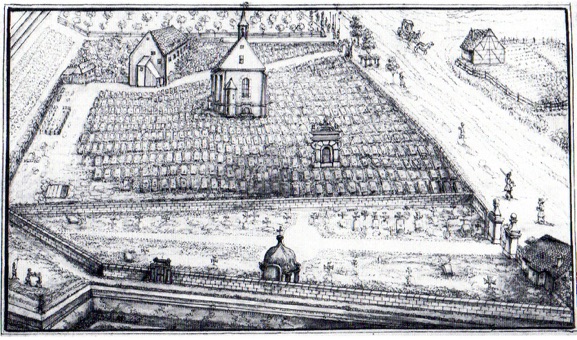
Fig 49 Line drawing of St Rochus in 1717.
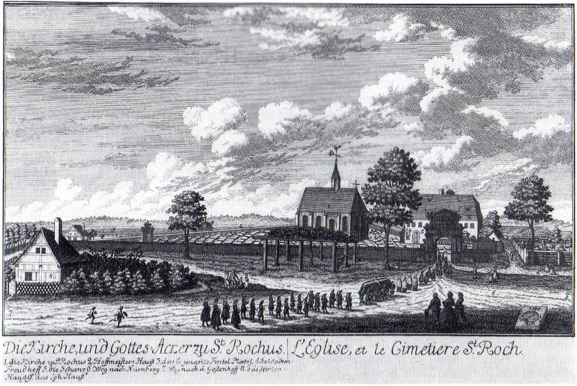
Fig 50 Copperplate engraving of St Rochus from 1759.
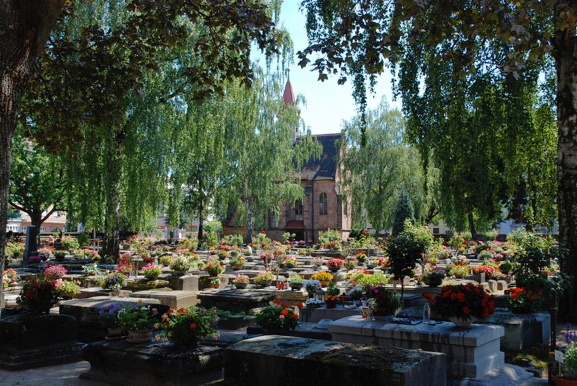
Fig 51 St Rochus - Imhoff Chapel
A few thimble makers are buried in the St Rochus graveyard but little is known of them.
Grave 225 Hans Lang
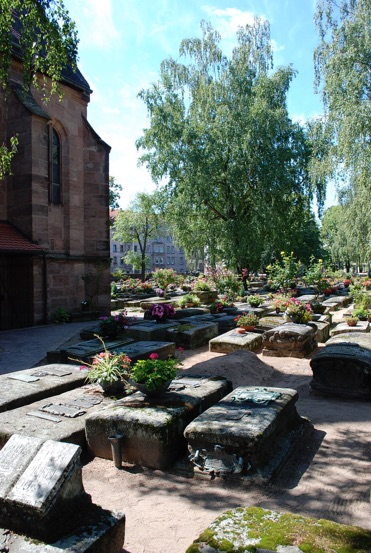
Fig 52
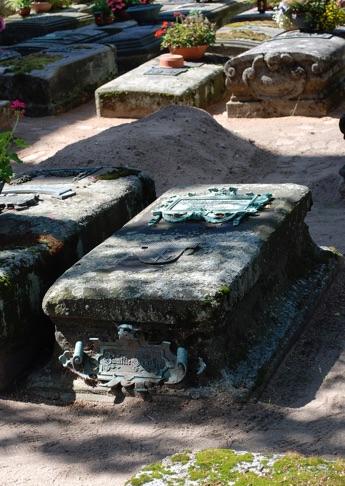
Fig 53
Hans Lang was a thimble maker in the 16th century and was buried in 1525 (Figs 52, 53). Nothing further is known about him, his life or his family, if he had one.
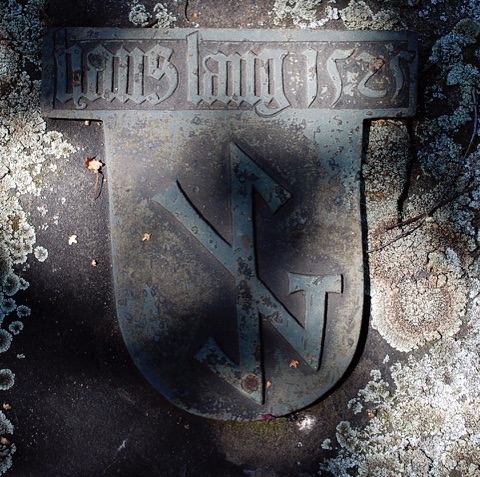
Fig 54
The epitaph Fig 54) comprises a shield, probably a Hauszeichen or Meisterzeichen (house or master’s mark), below the simple inscription:
‘Hans Lang 1525’
Two other plaques for the Familie Taucher share this grave now (Figs 55, 56),
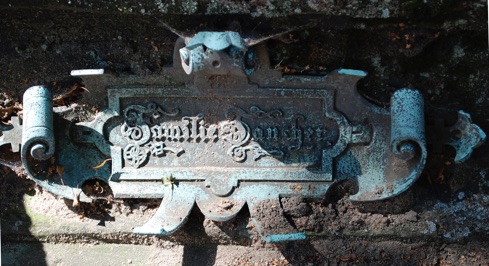
Fig 55
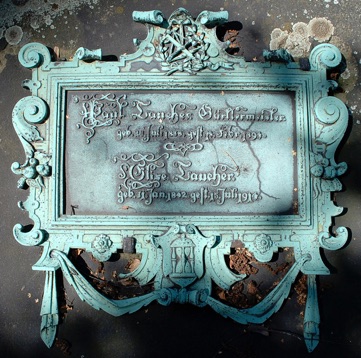
Fig 56
Grave 231 Wolff Knauff
There are three plaques on this grave and the stone itself is engraved indicating that further families are buried in this grave. This seems to be one of the most popular old graves in the graveyard and this may have something to do with the close proximity of the grave to the Church (Fig 57).
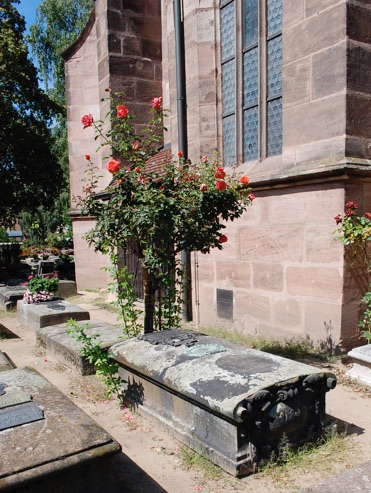
Fig 57
Wolff Knauff and his family lived and worked in the 17th century in Nürnberg.
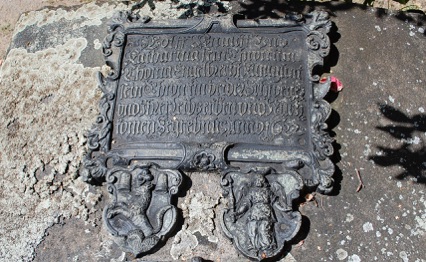
Fig 58
The epitaph (Fig 58) consists of a decorated rectangular plaque below which are two shields. Within the plaque is the inscription:
'Wolff Knauff vnd
Katharina sein Ehwirtin.
Thoma Engelbrecht Kunigünt
sein Ehwirtin beider Schweger
vnd Ihrer Leibß erben vnd Nach
komen Begrebnus Anno 1622.'
(Wolff Knauff and his wife Katharina. Thoma Engelbrecht, Kunigünt his wife, both brothers in law and their natural children and their descendants’ burial. The year 1662.)
The left shield (Hauszeichen or Meisterzeichen) depicts a prancing wolf, two thimbles and a cloverleaf. The right shield contains an angel with a staff in her right hand.
The next plaque is older and dates to 1592. It belongs to Thoma Setstein and his wife Anna who may have had something to do with the craft of needlework (Fig 59).
The stone engraving is difficult to read now. It seems to relate to two families, one Keller is still clear enough to read but the second family name has worn away in parts and cannot be clearly read (Fig 61).
A more recent plaque belongs to the Families Rindl- Ehrmann (Fig 60).
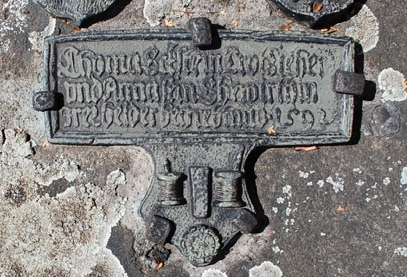
Fig 59
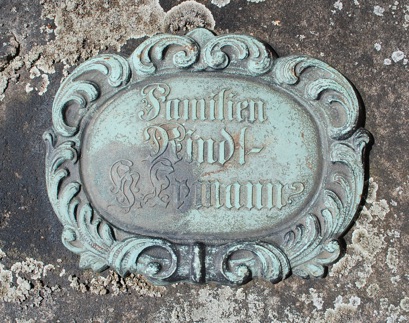
Fig 60
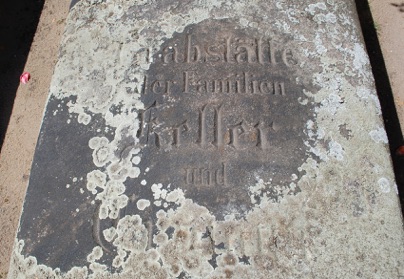
Fig 61
Grave 680 Georg Ehe
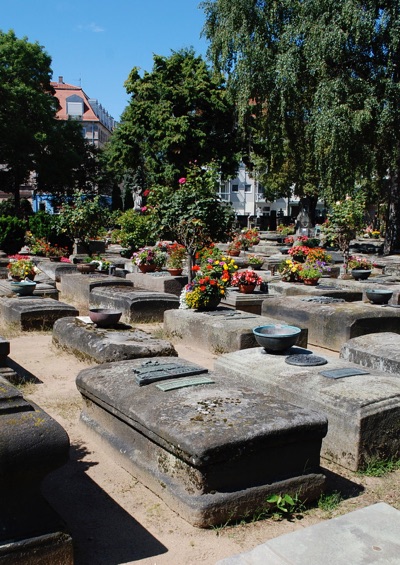
Fig 62
Georg Ehe was a thimble maker and was married twice. His first wife was called Anna and she had a daughter. His second wife, Sybilla, had six sons, two of whom died in childhood, and five daughters, the youngest of whom also died (Fig 62).
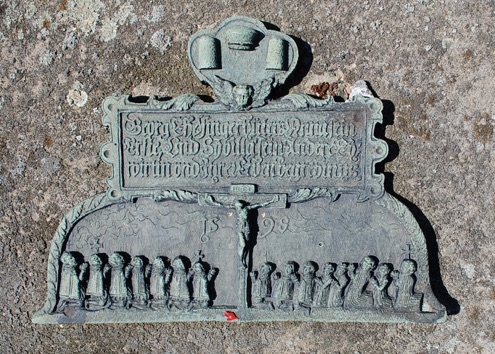
Fig 63
A rectangular plaque (Fig 63) contains the words:
‘Georg Ehe Fingerhüters Anna sein
Erste, Vnd Sybilla sein Andere Eh
wirtin vnd Jhrer Erben begrebtnus’
(Georg Ehe, thimblemaker, Anna his first, and Sybilla his other wife and their heirs’ burial place)
Above the plaque there is a Genius with feathered wings and three thimbles. Below is a depiction of the family praying to Christ on the cross. The commissioner of the epitaph and other male members of the family are on the left of the cross and the female members are on the right. Above Christ on the cross is a small plaque with:
‘INRI’
The date 1598 is divided by the cross ’15 98’. Deceased members of the family are marked with a small crucifix above their heads (two sons, his first wife and a later daughter).
The Familie Philip Ringler share this grave (Fig 64).
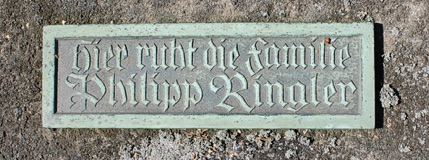
Fig 64
Grave 997 Hans Bruenn
Hanns Bruenn was a Nürnberg thimble maker but nothing is known about his life.
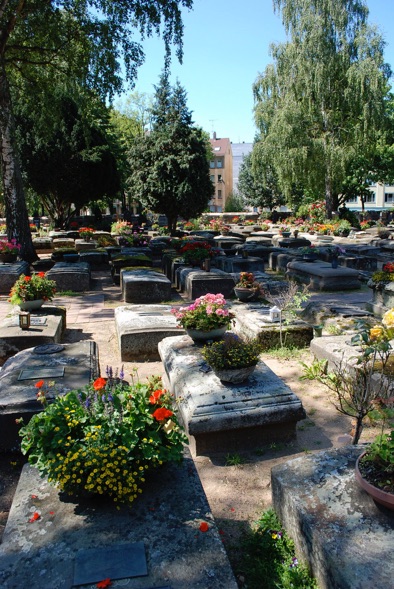
Fig 65
The gravestone (Fig 65) seems to have the family name engraved on the side of the stone but it is very worn and difficult to read (Fig 66).
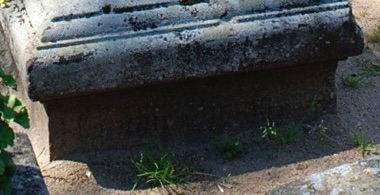
Fig 66
His epitaph is no longer on the grave stone (Fig 65) but the following text is recorded in Gugel (17).
‘Hanns Bruenn, Fingerhüter, und Ursula, sein Ehewürthin, ihr beider Erben Begräbnus’
(Hanns Bruenn, thimble maker, and Ursula his wife, [and] both of their inheritors’ burial)
The exact date of death is unknown but the epitaphs on neighbouring graves were dated 1590-1591.
Two additional family names are presently on the grave stone (Fig 67), Familie Pickel and Simon.
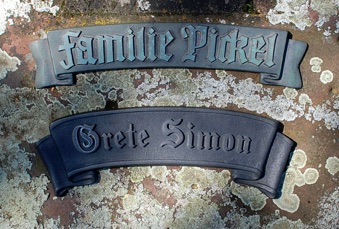
Fig 67
Grave 1248 Martin Winderlein
Martin Winderlein was a 17th century thimble maker and was buried in 1627 in the same grave as his wife Margaretha (Fig 68). The last two years and nine months of his life were spent as ‘Brother 527’ in the Mendel ’12 Brothers’ home in Nürnberg (Fig 69). The grave and plaque were probably bought in 1622 before he died.
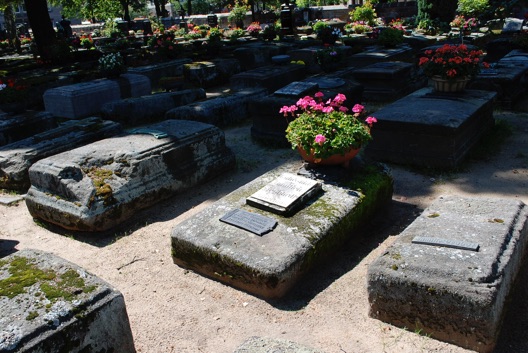
Fig 68
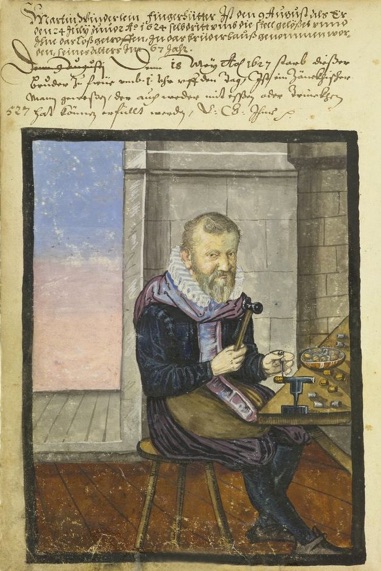
Fig 69
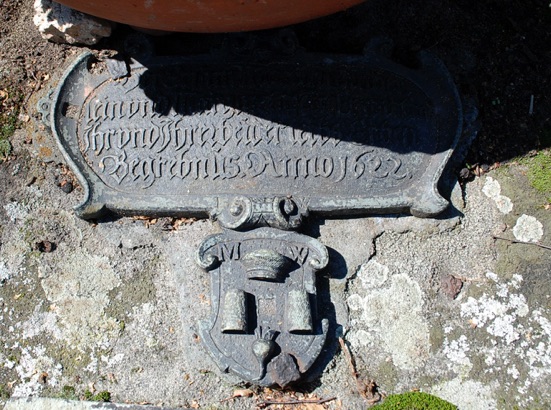
Fig 70
In an ornamental oval plaque (Fig 70) are the words:
‘Der Ersam Martin Winder
lein vnd Margaretha sein Ehwirtin
Ihr vnd Iher beider leibs Erben
Begrebnüs. Anno 1622’
(The honourable Martin Winderlein and Margaretha his wife, her and both of their inheritors’ burial place. In the year 1622)
Below the plaque is a shield, probably the Hauszeichen, Meisterzeichen or Kraftzeichen, for the family. The shield contains the letters ‘M W’, and three thimbles above a turnip.
Families Sieghardl and Lämerman (Fig 71) and, most recently, Sommer (Fig 72) are buried in this grave too.
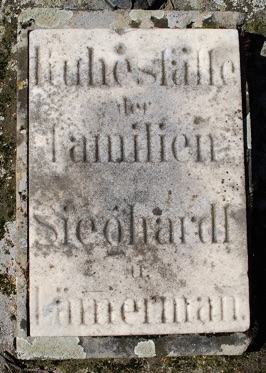
Fig 71
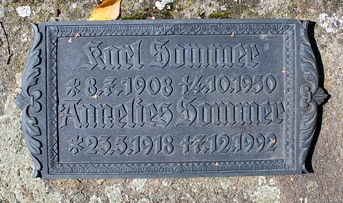
Fig 72
Grave 1305 Jacob Kraft
Jacob Kraft was a known coppersmith and since, at the time, thimble makers were in the Coppersmith’s Guild, it is thought that Jacob made thimbles too. His wife, Margareta, seems to have been married before she married Jacob and had already had some children. When the epitaph was commissioned after his wife’s death in 1608 Jacob’s wife and possibly some of her children were buried in the grave but Jacob was still alive. Some of Margareta’s children died earlier (1604) and are buried in this grave (Fig 73).
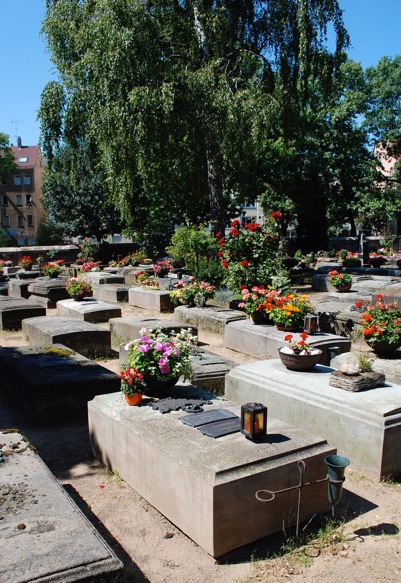
Fig 73
His epitaph (Fig 74), clearly placed in 1604 before his death (spaces left for later entry), is in the form of a decorated oblong plaque with the inscription:
‘Anno [ ] den [ ] Verschid
Jacob Kraft, Rottschmid,
Anno 1608 den 6 November Verschid
Margareta sein Eewirthin, ihr baider leibs
Erben, in erster vnd anderen Ehe Be
grebnüs, Denen Gott allen genad St:1604.’
(In the year [ ] the [ ] Jacob Kraft, coppersmith died. In the year 1608, on the 6th November Margareta his wife died, their natural children from their first and other marriage (may use this) burial place. May God give them all grace. Since 1604)
The spaces were for dates to be inserted.
On the bottom of the plaque are the letters ‘IW’ and these are the mark of the bronze caster, Jacob Weinmann.
Below the inscription is a shield (Hauszeichen or Meisterzeichen) with a candlestick and what could be thimbles or elaborate cupping cups Fig 74)..
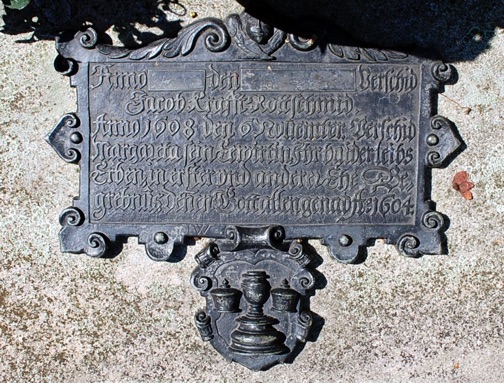
Fig 74
Two other family lines occupy the grave today (Fig 74). Familien Quiel Eber – Orlowski and Familie Spetta have separate plaques.
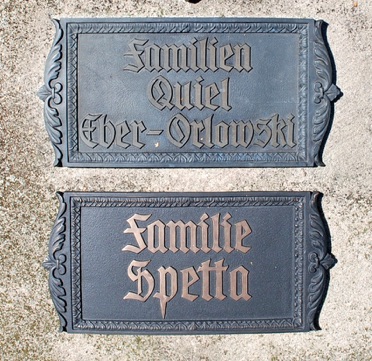
Fig 75
References
-
17.Gugel, Christoph Friedrich: Norischer Christen Freydhöfe Gedächtnis....Nürnberg, 1682. pp.50.
Holmes: na.
Researched and published in 2002/11
Copyright@2011. All Rights Reserved
Magdalena and William Isbister, Moosbach, Germany
nÜrnberg thimble maker’s graves - st rochus i
Navigation
